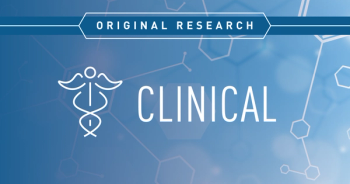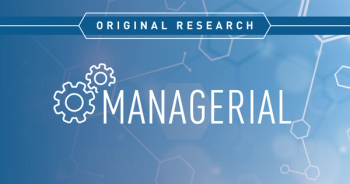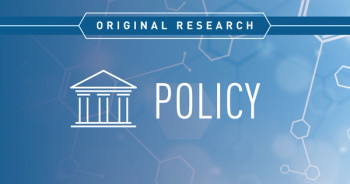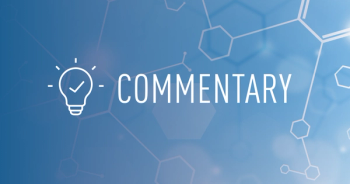
Supplements and Featured Publications
- Appropriate Use of Growth Hormone Therapy in Adults: A Collaborative Approach to Deliver Effective P
- Volume 10
- Issue 13 Suppl
CME/CE Quiz
CME/CE Questions
Continuing Medical Education Accreditation
The University of Cincinnati College of Medicine designates this activity for a maximum of 2 Category 1 credits toward the AMA Physician's Recognition Award. Each physician should claim only those hours that he/she actually spends in the educational activity.
The University of Cincinnati College of Medicine is accredited by the Accreditation Council for Continuing Medical Education (ACCME) to sponsor medical education for physicians.
Release Date: October 1, 2004
Expiration Date: October 31, 2005
Continuing Pharmacy Education Accreditation
The University of Texas at Austin College of Pharmacy is accredited by the Accreditation Council for Pharmacy Education (ACPE) as a provider of continuing pharmacy education. A total of 0.15 CEUs (1.5 contact hours) will be awarded to pharmacists for successful completion of this continuing education program. Successful completion is defined as receiving a minimum score of 75% on the post-test and completion of the CE Test Form/Program Evaluation. No retakes permitted. Continuing education statements will be mailed to pharmacists within 6-8 weeks of receipt of the CE Test Form/Program Evaluation. Post-test must be received by October 1, 2006.
Program No. 067-999-04-081-H01
Program Release Date: October 1, 2004
Expiration Date: October 31, 2006
Instructions
After reading "Appropriate Use of Growth Hormone Therapy in Adults: A Collaborative Approach to Deliver Effective Patient Care," complete the program evaluation and select the 1 best answer to each of the following questions. A statement of continuing education hours will be mailed to those who successfully complete (with a minimum score of 75%) the examination at the conclusion of the program.
1. Normally, growth hormone (GH) is secreted predominantly:
- During sleep
- Upon awakening in the morning
2. GH release from the pituitary is stimulated by the hypothalamic release of:
- Somatotropin
- Arginine
3. In the United States, GH deficiency (GHD) affects about how many adults?
- 50 000
- 500
4. Epidemiologic studies show that, in adults, GHD is linked to:
- Carotid artery intima media thickness
- All of the above
5. Which of the following laboratory provocation tests for GHD is considered the gold standard?
- Arginine
- Clonidine
6. A person with 3 other pituitary hormone deficiencies has a _______ probability of GHD.
- 50%
- 98%
7. Appropriate clinical goals for recombinant human growth hormone (hGH) therapy in adults include:
- Enhanced athletic performance
- Alleviate chronic fatigue syndrome
8. Well-defined adult GHD policies reduce the approval of inappropriate patients while having the flexibility for clinical judgment:
- False
9. GHD in adults is a real condition that is often overshadowed by the lifestyle demand for growth hormone:
- False
10. GH levels in plasma often typically mirror those of _______, and this level can be used to monitor the success of hGH therapy.
- Insulin-like growth factor binding protein 3 (IGF-BP3)
- GHRH
11. In the nonpediatric traditional patients, hGH dosing is typically:
- Less than required in children
- The same as in children
12. In the transitional patient, the American Association of Endocrinologists and the Growth Hormone Research Society guidelines recommend a starting hGH dose of:
- 0.4 to 0.8 mg/day
- 1.2 to 1.6 mg/day
GOAL
To provide participants with current payer and provider perspectives surrounding the use of human growth hormone in adults and transitional patients. Participants will be provided with managed care perspectives relating to growth hormone therapy, including current reimbursement issues, level of coverage, and selection criteria.
TARGET AUDIENCE
This activity is designed for physicians and pharmacists working in managed care organizations, who are involved with the appropriate treatment for patients with adult growth hormone deficiency.
EDUCATIONAL OBJECTIVES
After completing this continuing education activity, the participant should be able to:
- Determine appropriate use of growth hormone therapy in adults.
- Cite the presentation, diagnosis, and long-term consequences of growth hormone deficiency in adults.
CONTINUING MEDICAL EDUCATION ACCREDITATION
The University of Cincinnati College of Medicine designates this activity for a maximum of 2 Category 1 credits toward the AMA Physician's Recognition Award. Each physician should claim only those hours that he/she actually spends in the educational activity.
The University of Cincinnati College of Medicine is accredited by the Accreditation Council for Continuing Medical Education (ACCME) to sponsor medical education for physicians. Release Date: October 1, 2004. Expiration Date: October 31, 2005.
CONTINUING PHARMACY EDUCATION ACCREDITATION
The University of Texas at Austin College of Pharmacy is accredited by the Accreditation Council for Pharmacy Education (ACPE) as a provider of continuing pharmacy education. A total of 0.15 CEUs (1.5 contact hours) will be awarded to pharmacists for successful completion of this continuing education program. Successful completion is defined as receiving a minimum score of 75% on the post-test and completion of the CE Test Form/Program Evaluation. No retakes permitted. Continuing education statements will be mailed to pharmacists within 6-8 weeks of receipt of the CE Test Form/Program Evaluation. Post-test must be received by October 1, 2006.
Program No. 067-999-04-081-H01
Program Release Date: October 1, 2004
Expiration Date: October 1, 2006
FUNDING
This program is supported by an unrestricted educational grant from Genentech, Inc.
Articles in this issue
about 21 years ago
Treatment of the Adult and Transitional Patientabout 21 years ago
Human Growth Hormone Treatment in Adults: Balancing Economics and Ethicsabout 21 years ago
Clinical Presentation and Diagnosis: Growth Hormone Deficiency in Adultsabout 21 years ago
Participating FacultyNewsletter
Stay ahead of policy, cost, and value—subscribe to AJMC for expert insights at the intersection of clinical care and health economics.







































